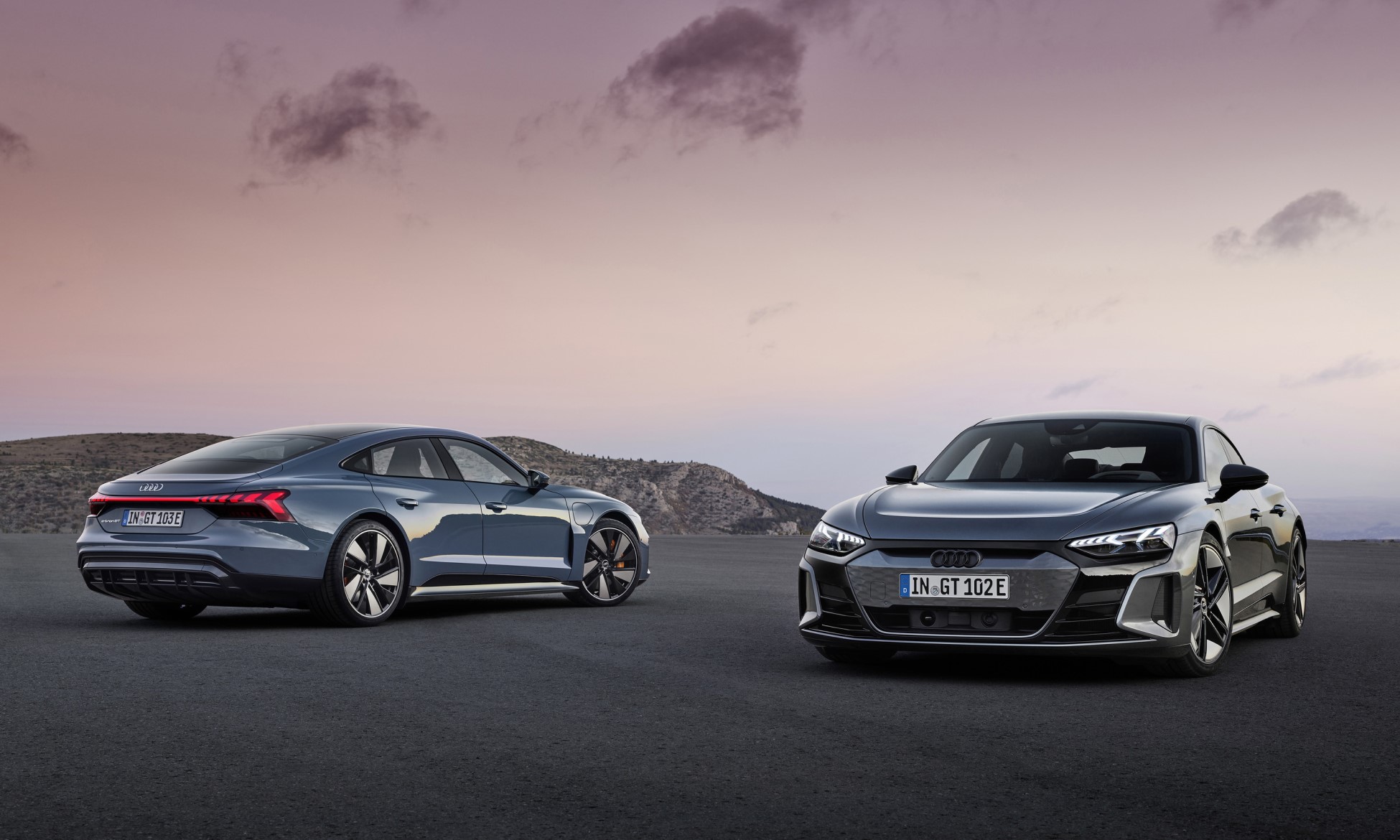Audi has made no secret of the fact that it plans to pursue e-mobility as its future. The automaker was one of the earlier German brands to get into Formula E (a series that will race in SA later this year). More recently the company announced that it would enter the Dakar Rally and return to the 24 Hours of Le Mans with alternative drivetrain racers (more on that here). The first all-electric E-Tron models were SUVs but today the Audi E-Tron GT and RS E-Tron GT models broke cover.
Follow Double Apex on Instagram and Facebook where we share more car content.
Range-leaders
The Audi RS E-Tron GT and the E-Tron GT are positioned as the head of Audi’s electric car onslaught. Both models take the shape of four-door coupes and boast several design cues that we will see on future battery powered Audi vehicles. These elements include the strongly modeled insert above the door sill trims and a new interpretation of Audi’s singleframe front grille.
If the proportions are familiar it’s because you may have seen them on the Porsche Taycan. The Audi Audi E-Tron GT and RS E-Tron GT use the same base as their Porsche stablemate. The E-Tron twins have generous dimensions. They are nearly five metres long with a wheelbase of 2 900 mm. Overall width is 1 960 mm and they stand just 1 410 mm tall.
Order from our online store and take advantage of free delivery in South Africa on orders over R349.
Battery power
Both models feature purely electric drivetrains. The cars feature two motors, one per axle. In the E-Tron GT total output of 350 kW is available with up to 390 kW available for approximately 2,5 seconds in boost mode via launch control. Total torque is rated as 630 N.m with 640 N.m in boost mode. The E-Tron GT accelerates from zero to 100 km/h in 4.1 seconds with a top speed of 245 km/h. In the RS E-Tron GT total output is rated as 440 kW (475 in boost mode) with peak torque of 830 N.m. RS versions take 3,3 seconds to sprint from rest to 100 km/h with a top speed of 250 km/h.
Click here to read about the E-Tron SUV models.
Both cars are all-wheel-drive and the rear motor in both derivatives is sent through a two-speed transmission. The electric all-wheel drive regulates torque distribution between the axles – continuously, fully variably, and within a few thousandths of a second.
Power for the electrical drivetrain is derived from a high-voltage battery that can store 85 kWh of energy net (93 kWh gross) in both models. The lithium-ion battery is mounted between the axles, at the car’s lowest point. This provides a low centre of gravity and a near ideal 50:50 mass. In the NEDC cycle, the Audi e-tron GT Quattro consumes 19,6–18,8 kWh of energy/100 km on average, the RS model consumes 20,2–19,3 kWh for a range of up to 487 km and 472 km, respectively.






![[UPDATED] Mazzei Formula Five Is One Man’s Obsession](https://doubleapex.co.za/wp-content/uploads/2024/08/Mazzei-Formula-Five-500x383.jpg)
![Ferrari Amalfi Introduced as Roma’s Replacement [w/video]](https://doubleapex.co.za/wp-content/uploads/2025/07/Ferrari-Amalfi-500x383.webp)
![Koenigsegg Sadair’s Spear is a Limited-Edition Track Weapon [w/video]](https://doubleapex.co.za/wp-content/uploads/2025/07/Koenigsegg-Sadairs-Spear-rear-500x383.webp)
Leave A Comment